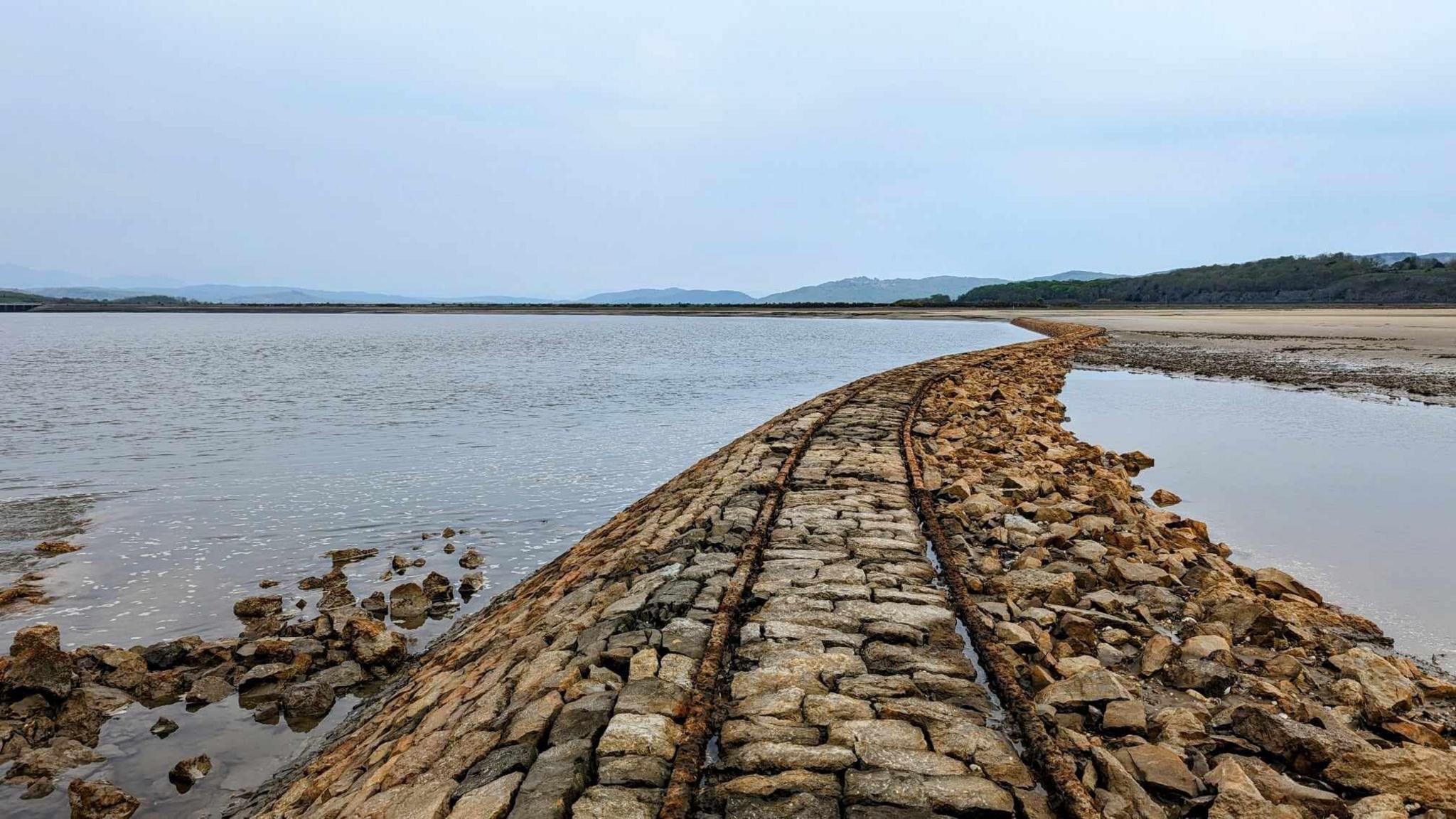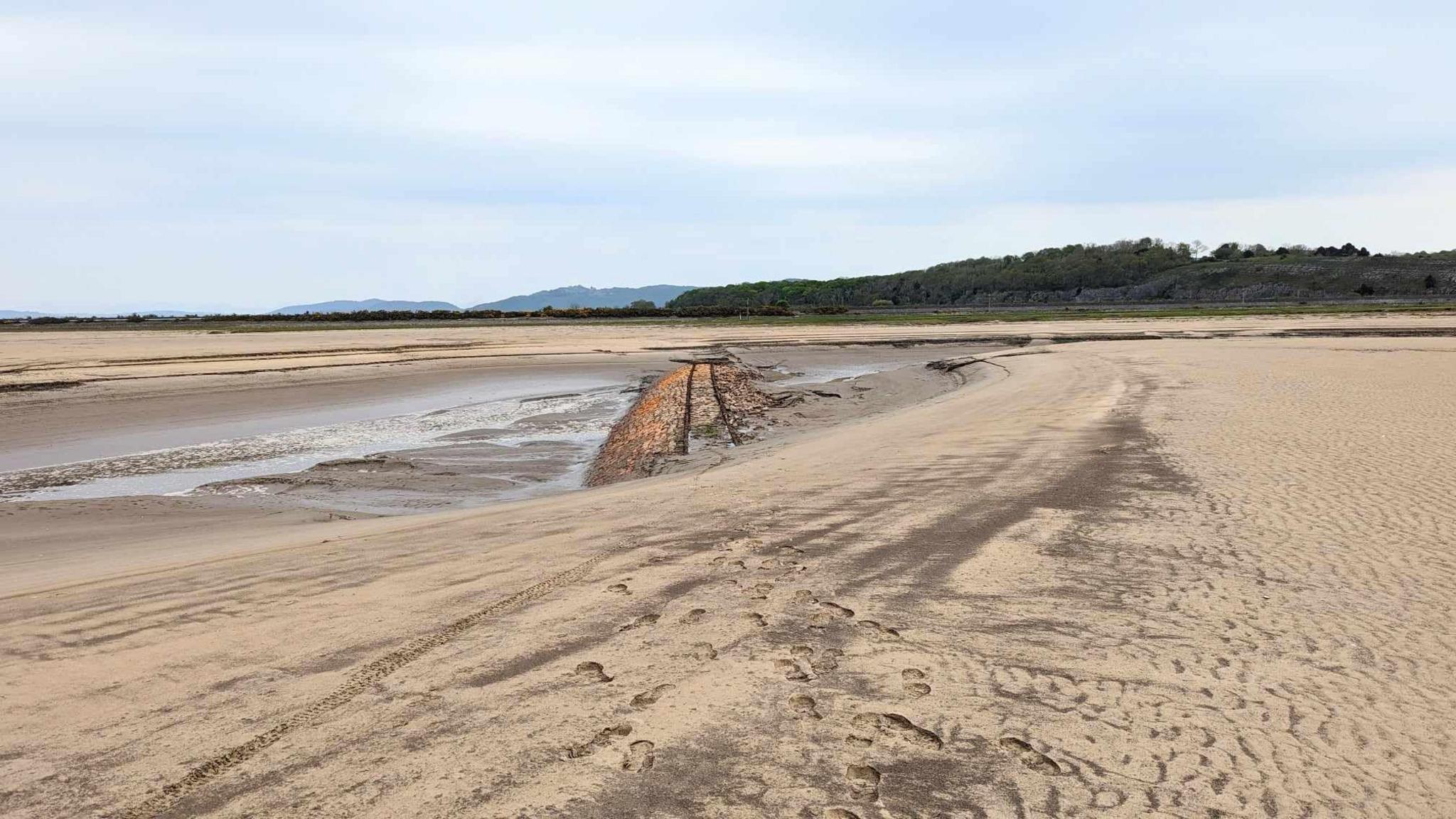Tide-exposed embankment 'is like finding Atlantis'

Collins Weir was built in the 1840s to keep deep water around a canal, but it didn't work
- Published
An archaeologist has likened the uncovering of a Victorian embankment across the Leven Estuary, to finding "Atlantis".
High tides and moving sands uncovered a long stretch of the structure, called Collins Weir, which is topped with wagon tracks.
The structure was built between 1847 and 1849 in an attempt to make the water around the Ulverston Canal deeper so ships could use the it.
The rail tracks were created to move the stone used to build the structure, but it did not work and the line was covered with sand.

It was last uncovered in 2007, but this time more of it is visible
Dan Elsworth, an archaeologist from Ulverston, said the reveal was like seeing Atlantis, the fictional underwater empire described by Plato.
"It's quite exciting, really," said Mr Elsworth.
"I'm sure there's more things out there that we've forgotten about completely as well, that will no doubt appear at different times."
It was last uncovered in 2007 but this time more of it is visible.
An attempt to extend the weir shortly after it was built also proved unsuccessful.
Mr Elsworth added the structure was "intended to try and move the channel of the River Leven back towards Ulverston Canal".
Follow BBC Cumbria on X (formerly Twitter), external, Facebook, external and Instagram, external. Send your story ideas to northeastandcumbria@bbc.co.uk.